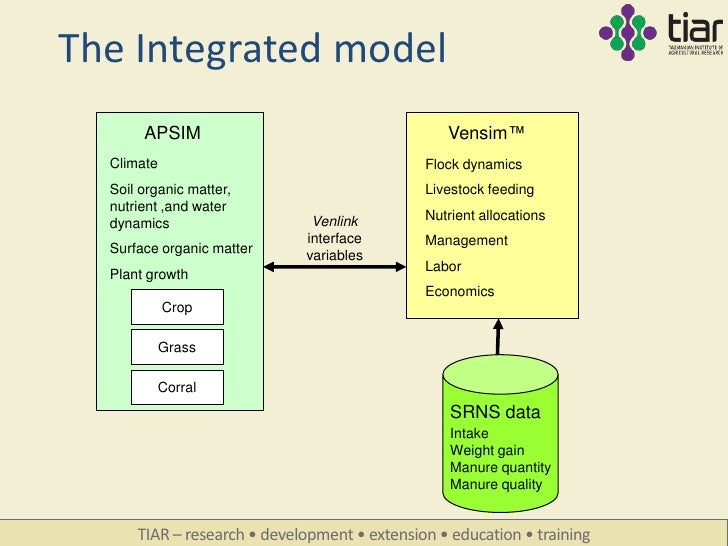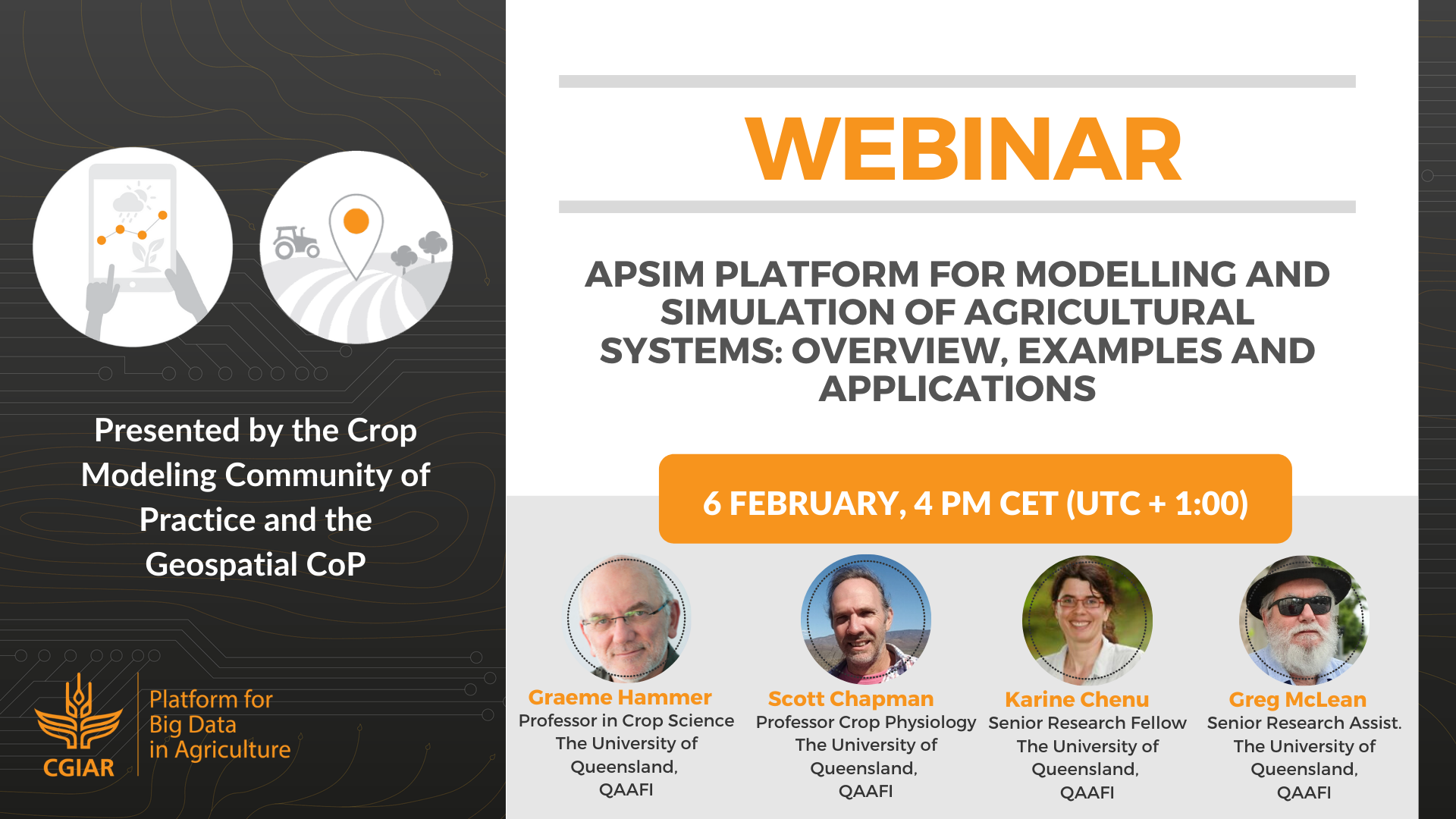APSIM plant model was successfully modified to simulate wheat, maize and fieldpea monocultures in the European agro-ecological zone. Once calibrated, the APSIM model was then used to simulate a. Editapsim edit an.apsim file. Apsim runs an.apsim file. Readapsim reads files (.out and.sim) generated by apsim into a data frame. Apsimexample runs (only a few) of the built-in examples. Apsimoptions set global options: path for executable, examples and warnings. Editapsimxml edit an XML file such as Maize.xml or Soil.xml.
Prepare Your Learners for Career Excellence. Engage, measure, and develop your learners with simulations that mirror real-world experiences. From the classroom to the conference room, see how educators, L&D leaders, and talent management teams are building the future of learning and development. Reimagine Your Learning Experience. APSIM resulted from a need for tools that provided accurate predictions of crop production in relation to climate, genotype, soil, and management factors while addressing the long-term resource management issues.
Skip to end of metadataGo to start of metadataAbstract | |
Name | APSIM (Agricultural Production Systems Simulator) |
|---|---|
Description | APSIM is internationally recognised as a highly advanced simulator of agricultural systems. It contains a suite of modules, or components, which enable the simulation of systems that cover a range of plant, animal, soil, climate and management interactions. It is undergoing continual development, with new capability added to regular releases of official versions over time. Its development and maintenance is underpinned by rigorous science and software engineering standards. |
Local Contact | Val Snow, AgResearch; Hamish Brown, Plant and Food; Dean Holzworth, CSIRO Ecosystem Sciences, Toowoomba, Queensland, Australia, http://www.apsim.info/Wiki/ |
Wiki URL |
Scope | |
Intended biophysical domains | Soil-plant-animal |
|---|---|
Does the model address water quality | No |
Water quality parameters | Nitrogen |
Intended purpose | Simulation of agricultural systems (arable, pastoral, forestry) including production/yield, drainage and leaching. Nitrogen and salts are the primary solutes at present but the model’s capability in phosphorus is under active development. |
Intended types of user | Primarily researchers but also consultants and farmers using alternative (simpler) user interfaces. |
Intended breadth of user base (in-house specialist to widespread) | Widely available and highly used (relative the the possible user base!). 300+ licences, 150+ members of the users forum. |
Geographic range limitations | None |
Spatial resolution | Point-in-space but multi-point. Surface or subsurface transport is not s strength. |
Spatial extent | Point |
Steady state or dynamic | Dynamic |
Temporal resolution | Daily or sub-daily |
Temporal extent | Unlimited, depends on weather data |
Spatial types | Vertical layers |
Spatial dimensions | 1D |
Supermodel Membership | If part of a supermodel, describe |
Climate | Climate data Details: Irrigation can be an input or can be simulated dynamically |
|---|---|
Topography and topology | Surface topography Details: Slope only |
Soils | Soil name or map Details: |
Landcover/use | Crop and stock types and attributes |
Groundwater | |
Water quantity/quality flux and state |

Input data required: old items to be removed once transferred to new template | Weather, soil properties, management rules |
|---|
Outputs | |
Climate | Irrigation amounts |
|---|---|
Topography and topology | |
Soils | |
Landcover/use | Crop and stock production |
Groundwater | |
Water quantity/quality flux and state | Drainage from soil |
Ouptut data produced: old items to be removed once transferred to new template | Various, user-selected. Examples inlcude drainage, leaching, soil water content and nutrient concentrations, plant production, extretal and fertiliser additions, animal production, ... |
|---|
Development history | |
Main developers | Software Engineering Group within the APSIM Initiative (AI). AI is an unincorporated joint venture with current members being CSIRO, 'Queensland Department of Employment, Economic Development and Innovation' (DEEDI), and University of Queensland. |
|---|---|
Other development organisations | Other organisations contribute, primarily but not exclusively, through the development or imporvement of components in APSIM. These organisations include AgResearch and Plant and Food Research. |
Current custodian organisation | APSIM Initiative |
Funding mechanism | APSIM Initiative membership fees, revenue from training courses, commercial usage of the model, substantial 'in-kind' development from advanced model users |
State of development | stable release |
First development year | 1992 |
Latest release year | 2011 |
Latest version | 7.3 |
Current development activity | Active |
Likely longevity | Long |
Cost and IP | |
Purchase or licence cost | Free for non-commercial usage |
Support cost | User forum free, training courses approx. AUD1200 for two days with 3:1 student:trainer |
Licence type | |
Commercial or IP constraints on use | Free for non-commercial usage, negotiate a licence for commercial usage |
Open/Closed Source | Open Source |
Applications |
Organisations | Publications | |
|---|---|---|
Many | Many | Keating, B.A., Carberry, P.S., Hammer, G.L., Probert, M.E., Robertson, M.J., Holzworth, D.P., Huth, N.I., Hargreaves, J.N.G., Meinke, H., Hochman, Z., McLean, G., Verburg, K., Snow, V.O., Dimes, J.P., Silburn, D.M., Wang, E., Brown, S.D., Bristow, K.L., Asseng, S., Chapman, S.C., McCown, R.L., Freebairn, D.M., Smith, C.J., 2003. An overview of APSIM, a model designed for farming systems simulation. European Journal of Agronomy 18 267-288. |
Technical considerations | |
Languages used | Several, historically primarily Fortran and C++, migrating to all .NET (C# and VB) |
|---|---|
Is a formal API defined? | |
Is the model engine separated from the user interface? | Yes |
User Interface | Graphical Desktop |
Techniques/methods for data input | Primarily hands-on but automated population or variation is relatively easy |
Input data formats | Various |
Techniques/methods for data output | Primarily hands-on |
Output data formats | text, csv, investigating NETCDF |
Techniques/methods for data visualisation | Limited graphics in available in GUI, link to R scripts |
Techniques/methods for user interaction and control | |
Methods included for calibration and uncertainty | User driven |
Operating system / platforms | MS Windows |
Quality of code and systems engineering | Good. Version control and testing system implemented. |
Willingness of developers to collaborate | High |
Stability | Reasonably |
Availability of documentation of theory and code/software | |
User information | |
What do users have to learn? | With the standard interface, quite a lot. There are simpler, farmer-oriented, user interfaces with constrainted options. |
Ease of learning | Good self learning material available but high expectation on user |
Ease of use | Good compared to other models but not easy |
Availability and completeness of user documentation/manuals | Very available butvariables completeness. |
Availability of support | High |
Willingness of developers to support users | High |
Availability of user forums | |
Other information | |
Linkages to other models | Add-hoc |
Notes |

Links
URL |
|---|
APSIM Wiki |
Apsim-sugar

Apsimeskime Farais
References
Apsim Maize
Description |
|---|